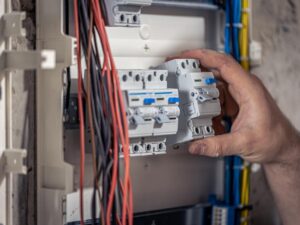We’ve all heard of the phrase “sticker shock.” It’s when we’re thrown for a loop when an item we’re interested in buying turns out to cost way more than we were expecting. Or, as Merriam-Webster puts it, sticker shock is “astonishment and dismay experienced on being informed of a product’s unexpectedly high price.” Perhaps even more disconcerting, astonishing, and dismaying is a high electric bill — or electric bill shock! This is when our electric bill has skyrocketed month over month or year over year.
Electric Bill Shock
The reason this is more upsetting than sticker shock is that we have already consumed the electricity. We have to pay the bill. There’s no going to the power company folks and saying, “You know what? I’ve decided not to buy this. The price is just too steep.”
Fortunately, there are ways to avoid electric bill shock. It involves troubleshooting a high electric bill and determining where, when, and how we can make cuts to our electricity consumption. This will save us money over both the short term and the long term.
There’s more at stake here than money, by the way. Energy consumption — and its flip side: energy conservation — are important for a wide range of reasons. Not only can troubleshooting a high electric bill help save you money; it also helps save resources.
As you read this, please don’t hesitate to contact Prairie Electric if you have any questions.
Energy Consumption
For the purposes of this blog post topic, we’re going to assume that your electric meter is functioning properly. That is to say: We’ll look at a few possibilities as to why you’ve actually consumed so much electricity rather than assuming the meter is faulty. (Or that the meter reading was incorrect.)
We’re also assuming that the number of days you’ve been billed for is typical. In other words, you’ve been billed monthly, and each month’s bill contains generally the same number of days.
Finally, has the cost of electricity gone up? Check with your power company to see their cost-per-kilowatt-hour rate is. Has there been an increase lately? (It wouldn’t be unusual.)
You would have been notified of this change, though. Perhaps you missed it?
Weather and Watts
Here in the Pacific Northwest, we only have a short window of warm and sunny weather. (Blink and you’ll miss it!) Most of the time, we’re either smack dab in the middle of the cold, rainy season or we’re headed straight for it.
It’s not unusual for electric bills to skyrocket when the weather turns from warm to cold.
Look at your year-over-year energy usage. You’ll probably notice spikes in energy consumption in the late fall and early winter months. Makes sense. That’s when people are running their heating units to help keep their homes nice and cozy.
Power Hungry
HowStuffWorks.com has a handy chart that ranks appliances “in order of their hunger for power.” The hungriest appliances?
- Heat pump or central air conditioning
- Water heater
- Clothes drier
- Water pump
- Space heater
- Hair drier
- Electric range burner
- Refrigerator
- Computer and monitor
- Light bulb
Notice how many of the things on that list have to do with keeping things warm?
If you’re looking for energy-saving tips, there are plenty. But how do you stay warm when the solution to consuming less electricity typically means using less heat? There are only so many sweaters you can put on at once and only so much hot chocolate you can consume to help keep you warm.
Instead, search for energy-saving appliances — ideally those with Energy Star ratings.
You’ve probably noticed the Energy Star logo on some of your appliances. In fact, 9 out of 10 American households are said to recognize that logo.
According to the Energy Star website, “Since 1992, ENERGY STAR and its partners helped save American families and businesses nearly 4 trillion kilowatt-hours of electricity and achieve over 3 billion metric tons of greenhouse gas reductions, equivalent to the annual emissions of over 600 million cars. In 2017 alone, ENERGY STAR and its partners helped Americans avoid $30 billion in energy costs.”
Energy-efficient appliances are great at helping reduce energy consumption. If you’re troubleshooting a high electric bill, chances are you’ve been using a lot of energy to keep things warm around the house.
What else might you do to save on energy costs?
Energy Saving Tips
One good way to save money on an electric bill is to take shorter hot showers — or less hot showers in general. This will reduce the demands on your hot water heater, which, as we’ve seen, is pretty power-hungry.
Consider hanging laundry to dry or combining loads of laundry. You can reduce electricity usage by limiting the amount of heating and cooling you do each day. Try not to run the air conditioner when nobody is home, for example.
A simple fix like this and you’ll likely start saving money on your energy bills — a little, anyway!
Last but not least, the number of electronic devices in use at any one time can cause your power bill to go up. Think of how many things you have plugged in right now: your phone charger; the television; your laptop and desktop computers; video game consoles; routers; cable boxes; and on and on and on.
Taken one at a time, these items don’t consume much electricity. But over time, even a little can add up to a lot of demands on your electric service, resulting in a high bill.
Questions? Comments? Prairie Electric is here to help. Get in touch today!


